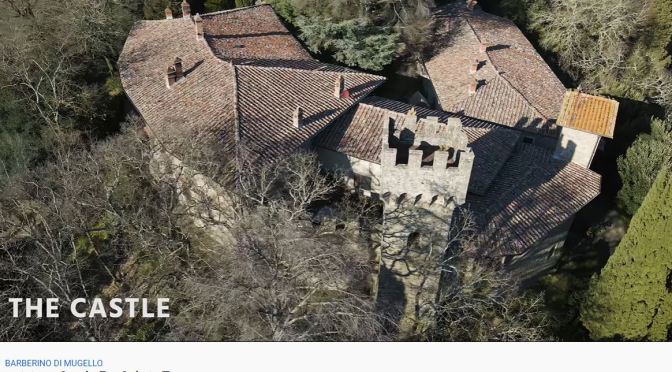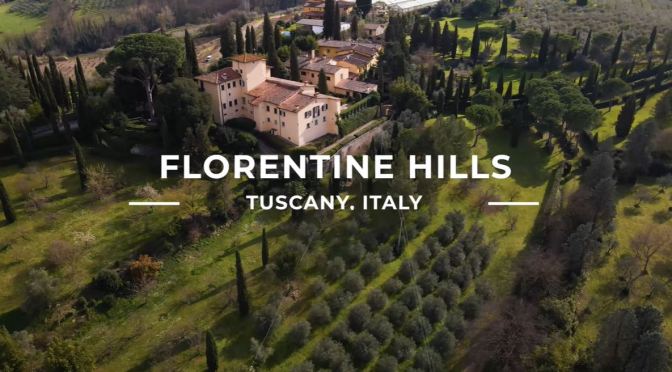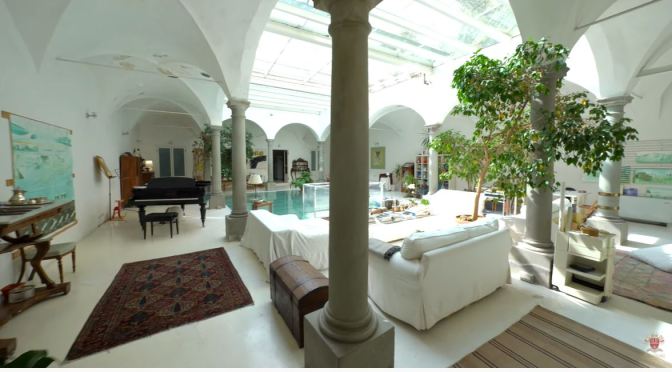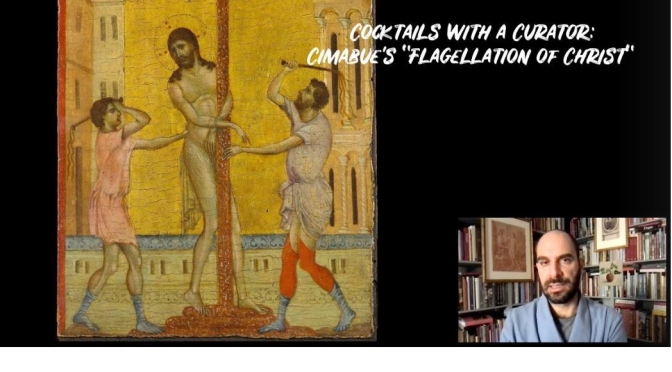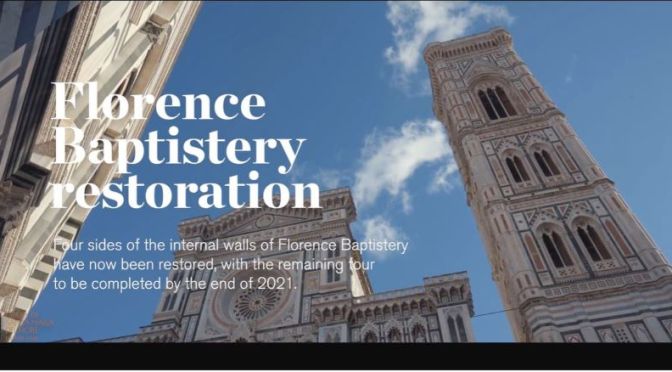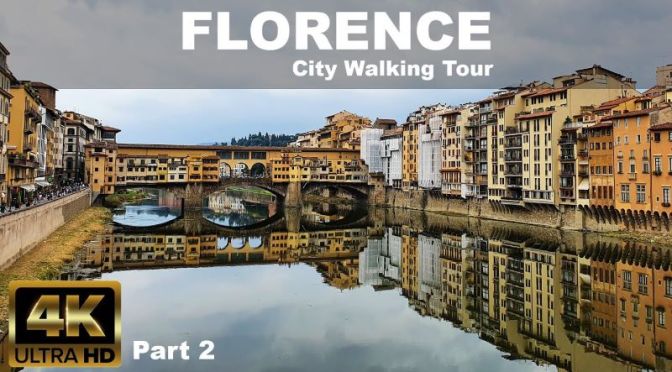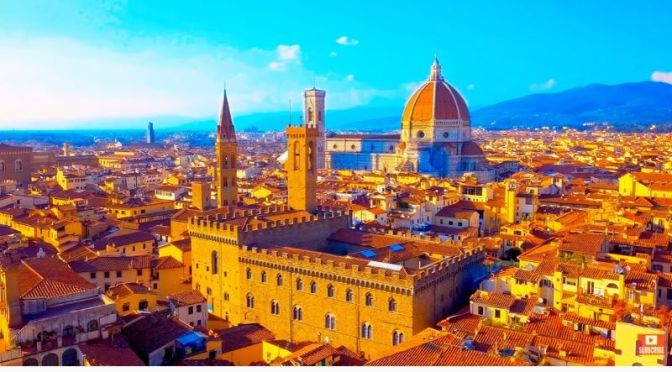Florence, capital of Italy’s Tuscany region, is home to many masterpieces of Renaissance art and architecture. One of its most iconic sights is the Duomo, a cathedral with a terracotta-tiled dome engineered by Brunelleschi and a bell tower by Giotto. The Galleria dell’Accademia displays Michelangelo’s “David” sculpture. The Uffizi Gallery exhibits Botticelli’s “The Birth of Venus” and da Vinci’s “Annunciation.”
Tag Archives: Florence
Archaeology: ‘Ancient Rome Live – Episode 1’ – Uffizi Gallery, Florence
Here is the first episode of the series about archaeology at the Uffizi Galleries, realized by the American Institute for Roman Culture. Darius Arya today speaks about some masterpieces of the Uffizi and the Boboli Gardens.
Tuscan Castles: ‘Mugello – Florence, Italy’ (Video)
In #Mugello, a green area at the outskirts of Florence, there is this ancient 11th-century complex for sale. This complex dates back to the Lombard period, and in 1370 was converted into a country villa. Its grounds measure approximately 53 hectares made up of cultivable lands and forests, and features several buildings which measure approximately 4,600 m2 overall. This complex is entirely protected by the Cultural Heritage Office and includes the main #villa, called the #castle, which measures approximately 1,600 m2, a lemon conservatory and a farm: these make up what is called a “court”, which is located on a high position and surrounded by five hectares of grounds adorned with wonderful Italian-style gardens designed by Swissman Louis Dapples in the early 20th century.
Italian Villa Tours: ‘Lastra a Signa – Florence’ (Video)
Lastra a Signa is a comune in the metropolitan city of Florence in the Italian region Tuscany, located about 12 kilometres west of Florence.
This prestigious estate dates back to the 16th century and features the typical design of Florentine noble country homes: an elevated entrance, a square tower, and symmetrical elements on the façade.
The main villa measures 900 m2 and has several staggered levels. Its rooms feature elements which are typical of Tuscan tradition, such as some refined old floorings, vaulted ceilings or with wooden trabeation, some massive stone fireplaces, and frescoed walls. Every room has been furnished and decorated with great attention to detail.
This charming 16th-century home overlooks the valley leading to Florence, a city which is well-known as the cradle of the Renaissance, and offers a stunning view over the surroundings. It is surrounded by over 10 hectares of grounds which are completely fenced and feature many terracings, olive trees and tall trees. A Renaissance well and some charming potted lemon trees adorn the part of Italian-style in front of the villa.
Italian Views: ‘Restored 13th-Century Apartment In Center Of Florence’
In the historic center of Florence, just 100 m from Piazza del Duomo, bright 480-sqm 5-bedroom apartment with terrace. Result of the restoration of a 13th-century convent, this property is a unique blend of antique and modern finishes: the living hall, in particular, features the columns enclosing the cloister of the convent but is fully covered by a see-through glass ceiling. The basement, currently an atelier, could be easily converted into a wellness center with pool.
Cocktails With A Curator: Cimabue’s “Flagellation of Christ” (Frick Video)
In this week’s episode of “Cocktails with a Curator,” Deputy Director and Peter Jay Sharp Chief Curator Xavier F. Salomon examines the only work by Cimabue in a public collection in the United States, a small panel depicting “The Flagellation of Christ.” Acquired by the Frick in 1950, the attribution of this work was a topic of debate until a sister panel was discovered in 2000, establishing that they once belonged to a larger ensemble by the 13th-century Florentine. (In 2019, a third fragment was discovered.) As a nod to the gold background, this week’s complementary cocktail is the Gold Rush, a drink invented in New York in the 1920s.
Cimabue, also known as Cenni di Pepo or Cenni di Pepi, was an Italian painter and designer of mosaics from Florence. Although heavily influenced by Byzantine models, Cimabue is generally regarded as one of the first great Italian painters to break from the Italo-Byzantine style.
To view this painting in detail, please visit our website: https://www.frick.org/cimabuechrist
Profiles: ‘Marbled Paper’ Makers Of Florence, Italy
In the Italian city of Florence, high-quality colored paper and gift wrap have a long tradition. In fact, some of it is still made by hand. These papers are famous for their delightful patterns, shiny colors, and their Italian Renaissance-era motifs. We went to visit paper manufacturers in Florence to find out more about this age-old tradition!
Travel & Architecture: 14th Century Florence Baptistery Restoration
Four sides of the internal walls of Florence Baptistery have been restored, with the remaining four to go by the end of 2021. “Here come all those who wish to see admirable things” is the English translation of the words set in the marble inlay of the floor of Florence’s baptistery, as visitors enter through the Gates of Paradise.
These worthy items include the fourteenth-century mosaics depicting prophets, bishops and cherubs, which are enjoying renewed vigour after the restoration of four of the eight sides of Florence’s oldest monument. The internal walls of the baptistery began to be restored towards the end of 2017 following a restoration campaign on the external walls and roof.
Many discoveries emerged from the diagnostics, the first of their kind to be conducted on the monument, including the original technique used in the parietal mosaics; the presence of a pigmented wax on the green Prato marble, used to cover the white limestone that had formed due to water coming in through the roof, now removed to reveal the stone’s natural hue; and traces of gold leaf on one of the capitals of the matroneum, which could form evidence that the capitals were all originally covered in gold leaf.
In the first couple of decades of the fourteenth century, having completed the colossal feat of the mosaics inside the baptistery’s dome, the decision was made to extend the technique to the parietal sides, something that wasn’t part of the original plans.
It was a solution that allowed the mosaics to be superimposed over the marble covering and solve the issue of the monument’s static nature. Made-to-measure hollow terracotta tiles were used, cut and fixed to the marble on the baptistery’s walls with central iron linchpins driven back and welded in a straight line.
“A hurried sinopia was then conducted on the tiles and later the mosaic with a direct method and over days, which can still be identified and interpreted today,” explained Beatrice Agostini, planner and head of the restoration campaign of Opera di Santa Maria del Fiore. “Even the mixture used to apply the mosaic tiles is absolutely unique. Ordinary mortar wasn’t used. Instead it was more of a glue, and it’s the decline of this compound that has caused the most problems in this restoration.”
Walking Tours: ‘Florence – Italy’ (4K UHD Video)
Florence, capital of Italy’s Tuscany region, is home to many masterpieces of Renaissance art and architecture. One of its most iconic sights is the Duomo, a cathedral with a terracotta-tiled dome engineered by Brunelleschi and a bell tower by Giotto. The Galleria dell’Accademia displays Michelangelo’s “David” sculpture. The Uffizi Gallery exhibits Botticelli’s “The Birth of Venus” and da Vinci’s “Annunciation.”
Video Timeline 00:10 Piazza del Duomo – Cattedrale di Santa Maria del Fiore 10:51 Via Roma 12:05 Piazza della Repubblica 13:40 Via dei Calzaiuoli 16:00 Piazza della Signoria – Marzocco 18:00 Loggia dei Lanzi 27:00 Ponte Vecchio
Aerial Travel: ‘Florence – Italy’ (8K UHD Video)
Florence, capital of Italy’s Tuscany region, is home to many masterpieces of Renaissance art and architecture. One of its most iconic sights is the Duomo, a cathedral with a terracotta-tiled dome engineered by Brunelleschi and a bell tower by Giotto. The Galleria dell’Accademia displays Michelangelo’s “David” sculpture. The Uffizi Gallery exhibits Botticelli’s “The Birth of Venus” and da Vinci’s “Annunciation.”



